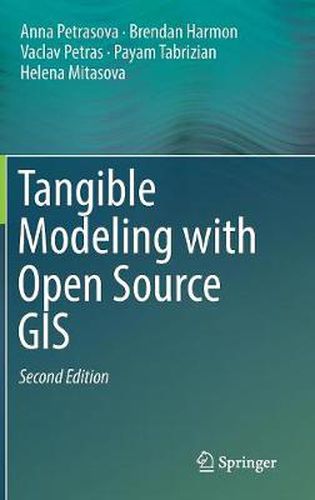Readings Newsletter
Become a Readings Member to make your shopping experience even easier.
Sign in or sign up for free!
You’re not far away from qualifying for FREE standard shipping within Australia
You’ve qualified for FREE standard shipping within Australia
The cart is loading…






This title is printed to order. This book may have been self-published. If so, we cannot guarantee the quality of the content. In the main most books will have gone through the editing process however some may not. We therefore suggest that you be aware of this before ordering this book. If in doubt check either the author or publisher’s details as we are unable to accept any returns unless they are faulty. Please contact us if you have any questions.
This book provides an overview of the latest developments in the fast growing field of tangible user interfaces. It presents a new type of modeling environment where the users interact with geospatial data and simulations using 3D physical landscape model coupled with 3D rendering engine. Multiple users can modify the physical model, while it is being scanned, providing input for geospatial analysis and simulations. The results are then visualized by projecting images or animations back on the physical model while photorealistic renderings of human views are displayed on a computer screen or in a virtual reality headset. New techniques and software which couple the hardware set-up with open source GRASS GIS and Blender rendering engine, make the system instantly applicable to a wide range of applications in geoscience education, landscape design, computer games, stakeholder engagement, and many others.
This second edition introduces a new more powerful version of the tangible modeling environment with multiple types of interaction, including polymeric sand molding, placement of markers, and delineation of areas using colored felt patches. Chapters on coupling tangible interaction with 3D rendering engine and immersive virtual environment, and a case study integrating the tools presented throughout this book, demonstrate the second generation of the system - Immersive Tangible Landscape - that enhances the modeling and design process through interactive rendering of modeled landscape.
This book explains main components of Immersive Tangible Landscape System, and provides the basic workflows for running the applications. The fundamentals of the system are followed by series of example applications in geomorphometry, hydrology, coastal and fluvial flooding, fire spread, landscape and park design, solar energy, trail planning, and others.
Graduate and undergraduate students and educators in geospatial science, earth science, landscape architecture, computer graphics and games, natural resources and many others disciplines, will find this book useful as a reference or secondary textbook. Researchers who want to build and further develop the system will most likely be the core audience, but also anybody interested in geospatial modeling applications (hazard risk management, hydrology, solar energy, coastal and fluvial flooding, fire spread, landscape and park design) will want to purchase this book.
$9.00 standard shipping within Australia
FREE standard shipping within Australia for orders over $100.00
Express & International shipping calculated at checkout
This title is printed to order. This book may have been self-published. If so, we cannot guarantee the quality of the content. In the main most books will have gone through the editing process however some may not. We therefore suggest that you be aware of this before ordering this book. If in doubt check either the author or publisher’s details as we are unable to accept any returns unless they are faulty. Please contact us if you have any questions.
This book provides an overview of the latest developments in the fast growing field of tangible user interfaces. It presents a new type of modeling environment where the users interact with geospatial data and simulations using 3D physical landscape model coupled with 3D rendering engine. Multiple users can modify the physical model, while it is being scanned, providing input for geospatial analysis and simulations. The results are then visualized by projecting images or animations back on the physical model while photorealistic renderings of human views are displayed on a computer screen or in a virtual reality headset. New techniques and software which couple the hardware set-up with open source GRASS GIS and Blender rendering engine, make the system instantly applicable to a wide range of applications in geoscience education, landscape design, computer games, stakeholder engagement, and many others.
This second edition introduces a new more powerful version of the tangible modeling environment with multiple types of interaction, including polymeric sand molding, placement of markers, and delineation of areas using colored felt patches. Chapters on coupling tangible interaction with 3D rendering engine and immersive virtual environment, and a case study integrating the tools presented throughout this book, demonstrate the second generation of the system - Immersive Tangible Landscape - that enhances the modeling and design process through interactive rendering of modeled landscape.
This book explains main components of Immersive Tangible Landscape System, and provides the basic workflows for running the applications. The fundamentals of the system are followed by series of example applications in geomorphometry, hydrology, coastal and fluvial flooding, fire spread, landscape and park design, solar energy, trail planning, and others.
Graduate and undergraduate students and educators in geospatial science, earth science, landscape architecture, computer graphics and games, natural resources and many others disciplines, will find this book useful as a reference or secondary textbook. Researchers who want to build and further develop the system will most likely be the core audience, but also anybody interested in geospatial modeling applications (hazard risk management, hydrology, solar energy, coastal and fluvial flooding, fire spread, landscape and park design) will want to purchase this book.